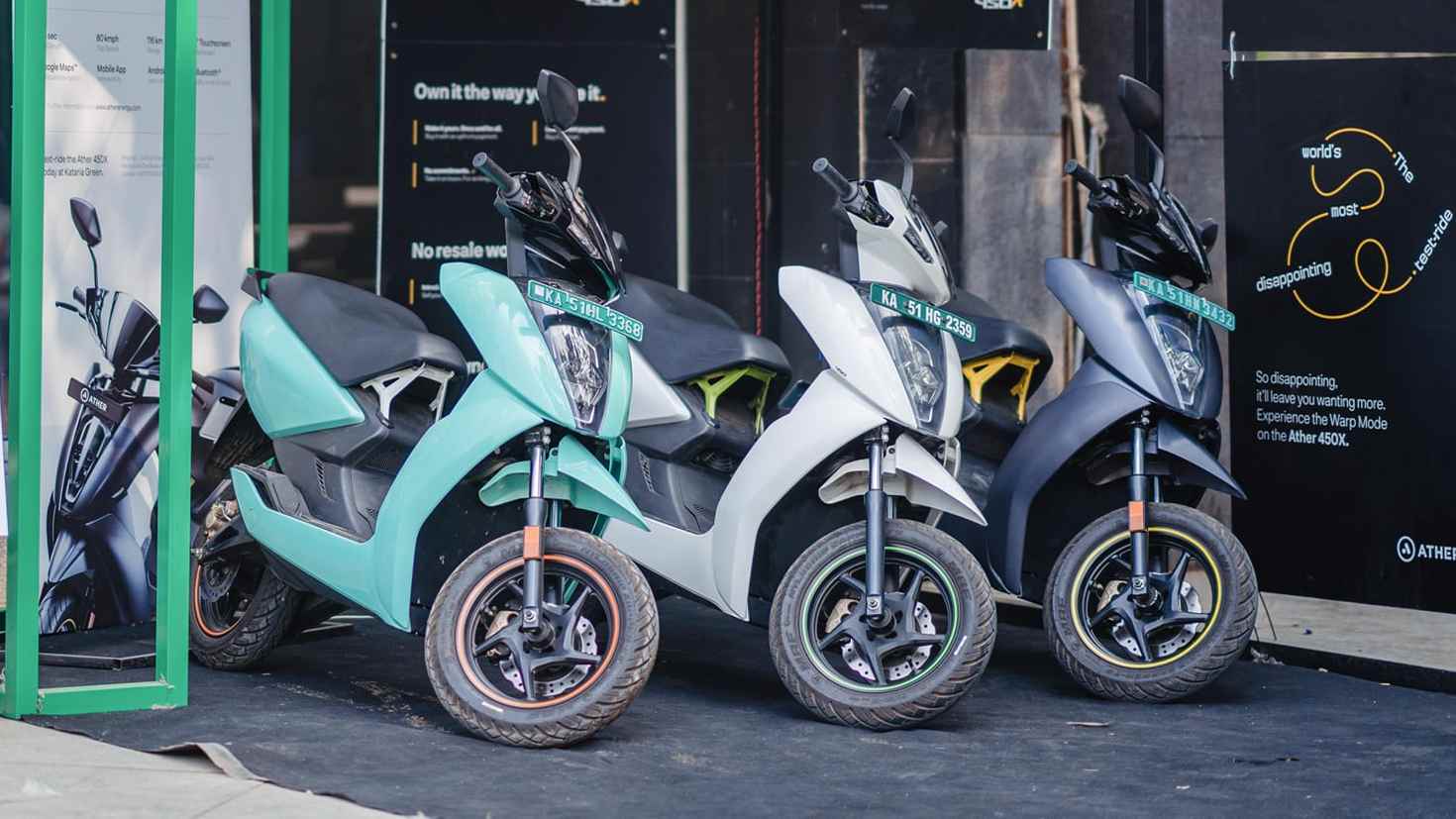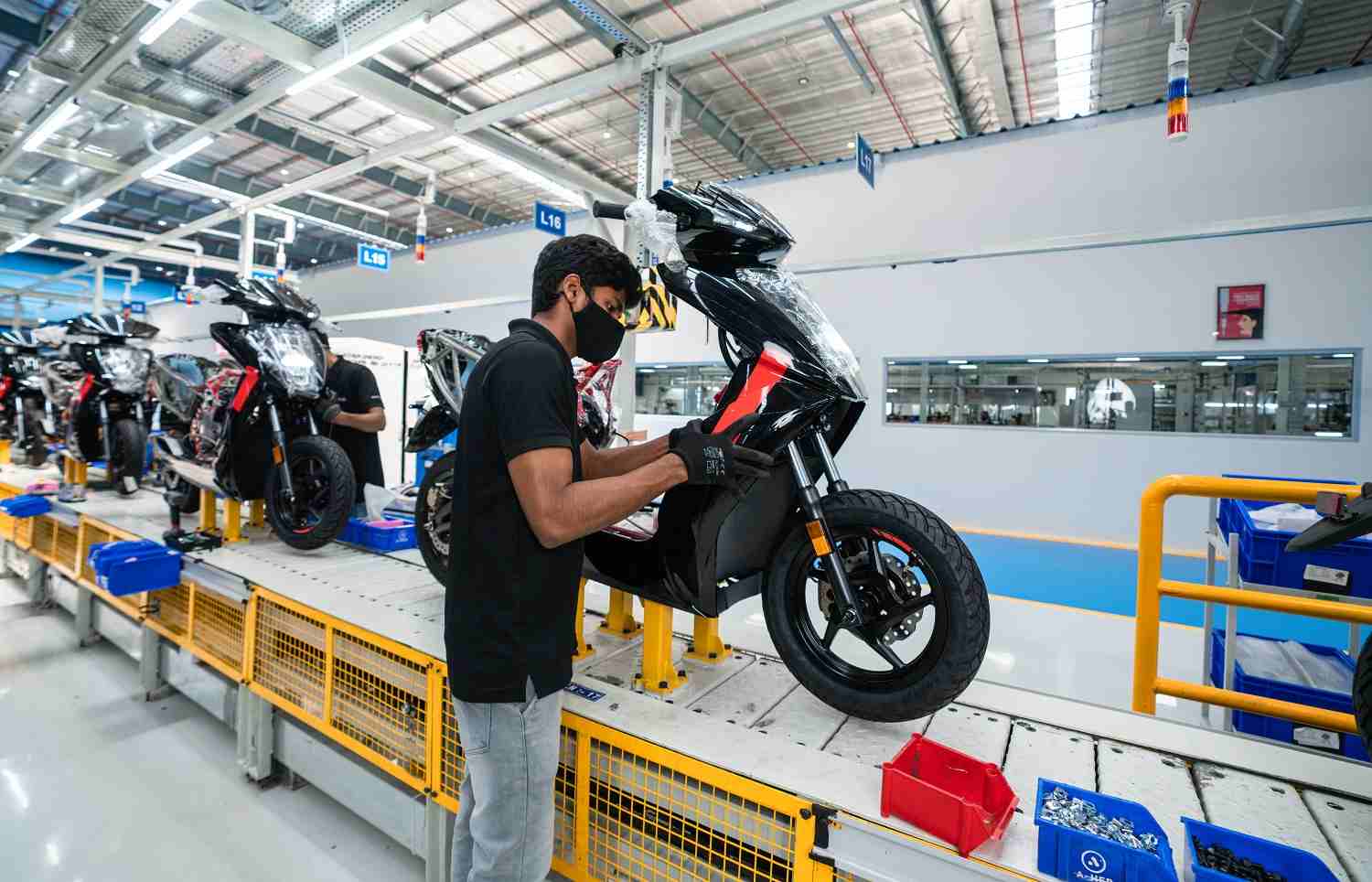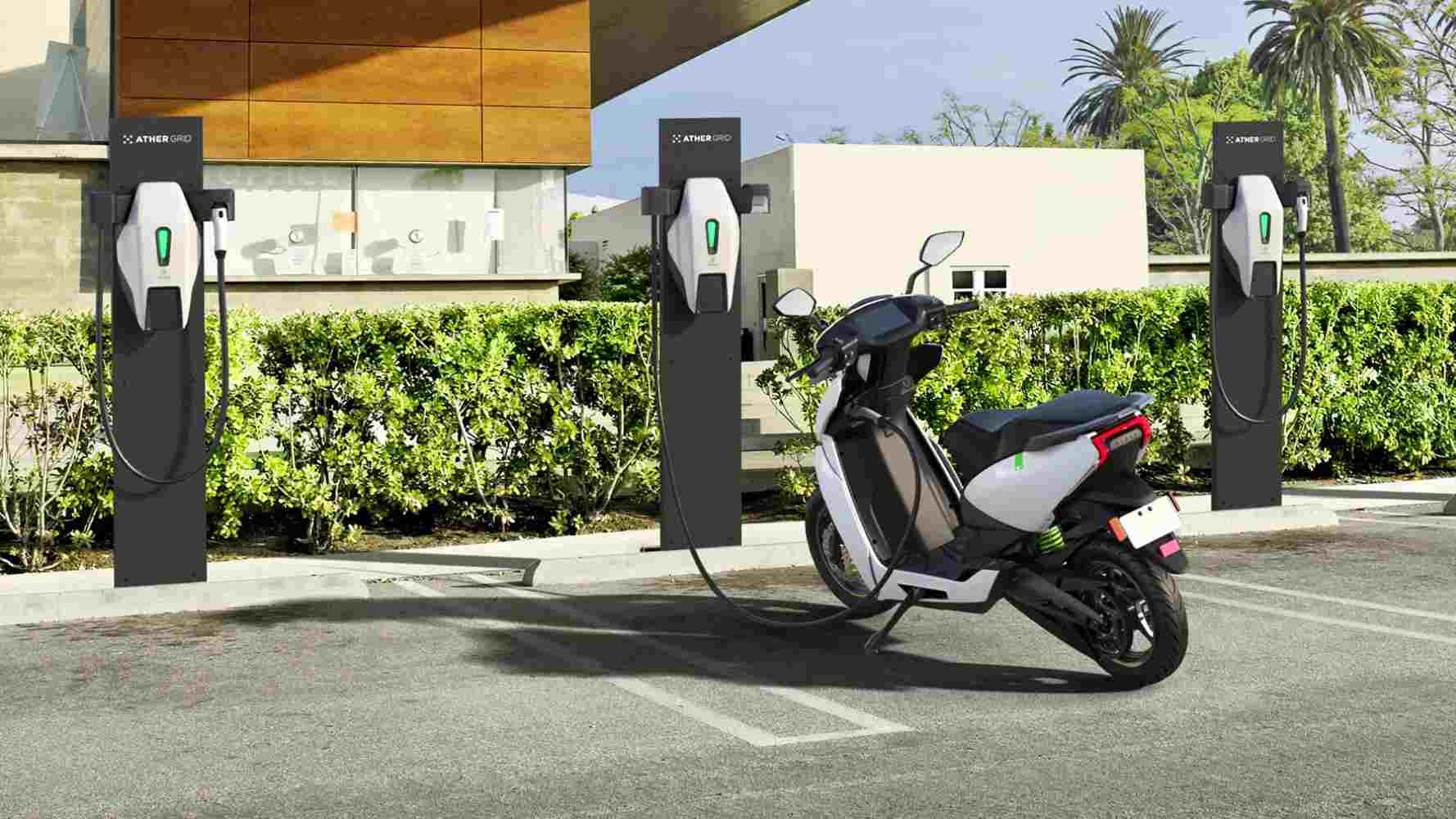Ather Energy eyes Tier 2 expansion, maxing production post ‘spectacular’ FAME 2 subsidy rise- Technology News, Firstpost
Amaan AhmedJun 14, 2021 17:56:46 IST
Ather Energy was one of the first electric two-wheeler manufacturers in India to react to the revision in the Faster Adoption and Manufacturing of (Hybrid) and Electric Vehicles 2 (FAME 2) policy structure for e-two-wheelers announced on 11 June. Shortly after the circular was issued, Ather Energy confirmed that the Ather 450 Plus and Ather 450X will see their prices drop by Rs 14,500, as the tweaked policy hikes the incentive for eligible models to Rs 15,000 per kWh (up from the previous Rs 10,000), and the cap for the total incentive to 40 percent of the vehicle’s ex-factory cost (up from the erstwhile 20 percent).
Terming the change in policy as ‘spectacular’, Ather Energy co-founder and CEO Tarun Mehta told Tech2 during an interview that he expects this revision to result in a substantial spike in demand for the company’s offerings.
Ather Energy CEO Tarun Mehta says the increase in FAME 2 subsidy will have a substantial impact on electric two-wheeler sales. Image: Ather Energy
“This policy revision is bound to drive significant increase in demand, and I think the timing of this revision is amazing, because electric scooters already had a good total cost of ownership (TCO) compared to their petrol counterparts; but a small upfront delta in price still existed. This increase in subsidy completely solves it. With all the subsidy support, there are good electric scooters that can compete with petrol scooters, and now the upfront price is also the same. If the upfront price is the same, and the running cost is six-eight times lower, e-scooters look like a no-brainer purchase”, said Mehta.
“Large chunks of the market that may have waited for a few years to go electric, because even though the TCO is good, they want to see more proof and know if everything will work out well. Now, for them, from an economics perspective, electric wins hands-down right away”, he added.

Both the Ather 450 Plus and Ather 450X (pictured here) have received an additional price drop of Rs 14,500 thanks to the FAME 2 subsidy revision. Image: Ather Energy
Underlining the significance of the increase in subsidy, Mehta pointed out how the brand’s entry-level model, the 450 Plus, is now closer than ever to some performance-oriented scooters on sale in India.
“We’ve got two different models, both catering to slightly different performance segments. The 450 Plus, which is also one of the quickest scooters in India today, is now a Rs 1.25 lakh scooter, which prices it extremely competitively to some other premium scooters in the market, especially for what it has to offer. It shifts the entire pricing by a full segment. The impact is quite substantial.”
In some locations, the benefits are even bigger. Post the revision, the Ather 450 Plus, in New Delhi, will cost Rs 1,13,500, a price at which it undercuts some premium petrol-powered scooters available currently. The higher-spec Ather 450X, on the other hand, will now cost Rs 1,32,426 (both prices ex-showroom).

Tapping Tier 2 cities, which were originally a target three years down the line, has now become an immediate priority, according to Mehta. Image: Ather Energy
The decision to increase subsidy and give the electric two-wheeler segment a shot in the arm will not just benefit the end buyer but will also bring into focus markets that were – until now – not an immediate priority. Mehta says this change will accelerate the company’s expansion plans rapidly, with potential for success in Tier 2 cities in India now too tempting to hold back.
“FAME 2 revision pulls forward the entire timeline for electrification by at least a few years. We would’ve thought aggressively about Tier 2 markets in about three years from now, but after this, we can start thinking about them right now; this year itself. What changes now in a big way is distribution. We want to enter a lot more cities. Originally, we’ve always talked about being in 25-30 cities, but I think with the new pricing, a lot of Tier 2 cities will find the products far more desirable. So, we’re going to enter a lot more Tier 2 cities. If that’s 20 or 50 more cities, I’ve got to figure that number out, but we will certainly see an acceleration of those plans.”

Currently equipped to churn out 1.1 lakh units annually, Ather’s Hosur plant can be scaled up to produce half a million scooters every year. Image: Ather Energy
An increase in demand will naturally have to mean an increase in production, and following the policy change, Ather Energy is targeting maxing out its current annual production capacity of 1.1 lakh units this year. Ather’s Hosur facility is spread out over 4,00,000 sq. feet and has the provision to quickly ramp up production to five lakh units.
“We have 1.1 lakh annual capacity already available; it’s the supply chain that has to scale up. That’s the key constraint. Through this year, I’m hoping to reach that capacity, and now this new incentive will pull that timeline forward. The current plant has the scale to go up to producing half a million units annually. We have space available to quickly expand production lines, both on the battery and vehicle side, and in about six to seven months, we can scale up the 1.1 lakh capacity to roughly about five lakh units”, said Mehta.
Given the price cap of Rs 1.5 lakh for electric two-wheelers to be eligible for the FAME 2 subsidy, manufacturers will – with a battery as big as 4 kWh in capacity – be able to pass on a subsidy of a substantial Rs 60,000. While its current models only have a 2.9 kWh battery, Mehta admits there is now a stronger case for manufacturers to provide a bigger battery for their models, which would enhance range without hurting the buyer’s wallet. That said, it will take time for bigger batteries to find their way into Ather’s scooters.
“Yes, we’ll have to now think as to how to factor a bigger battery in. Because of the recency of the revision, we don’t have an answer today as to how to make the math work while keeping the price attractive and the economics good for us. But yes, in the past, it was difficult to justify a bigger battery; there is now an additional incentive that justifies it. However, a new battery is such a substantial change that we can’t just knee-jerk introduce it in six months; we have to design, build, test, certify and mass-produce it, and thus, any change to the battery and hence the range would still be some time away”, said Mehta.

Ather Energy will consider adding a bigger battery to its future models, but that may still be some time away. Image: Ather Energy
Highlighting the challenges that would come with introducing a bigger battery (which, in Ather’s view, is not necessarily what most buyers want), Mehta added, “Cell technology has been evolving. When we introduced the 450X last year, we bumped up range by 10-15 percent within the same battery form factor. Those improvements continue to come in. A policy-led change can cause a much bigger jump, but we need to think through the product architecture, the feasibility of introducing that in the scooter, so… sochna padega. I don’t think the market desperately needs a much larger battery; of course, there are customers who will want it, but if they have to pay additional money for it, that’s difficult for them to justify. The new subsidy structure creates more possibilities there. Maybe in a few months we’ll have much better clarity on if we want to introduce a bigger battery and if yes then how.
However, if Ather does decide to introduce a bigger battery for a high-range offering, it won’t invest in creating a completely different model to put it into, with Mehta saying all Ather models due for launch in the next few years will be based on the 450 scooter platform.
While the new subsidy structure for electric two-wheelers means models with larger batteries will be eligible for a heftier incentive, Mehta doesn’t think the revision favours a particular section of electric two-wheeler manufacturers.
“I think the playing field is quite level irrespective of your vehicle size and pricing, as the incentive is linked to battery capacity. If you have a really small battery capacity (say, 1 kWh), you are operating in a different price bracket altogether, so a Rs 15,000 incentive should be appropriate for that segment. I don’t think anybody necessarily wins more”, remarks Mehta.
A revision in incentive is yet another step towards convincing more riders to switch over to an electric two-wheeler, and Mehta says the end goal is to make electric scooters and motorcycles an impossible-to-ignore proposition in terms of cost.
“Even with the old subsidy structure, electric two-wheelers made more sense for every customer, except that with EVs being new, a lot of customers may have opted to wait and see how things play out. You will see a lot of price-related changes in the market in the next few months; prices of every manufacturer’s model will fall by anything between Rs 10,000 – 15,000. If manufacturers were to invest in bigger battery packs over the next year or so, prices will fall even further. The end game is EVs will cost the same as petrol-powered vehicles up front, and with the added incentive of huge operational savings (because of high fuel prices) will be irresistible. Once that happens and people shift to electric in large numbers, the industry builds up good economies of scale, the overall subsidy after a few years goes away and the industry can then support itself”, Mehta explains.

Ather Energy is targeting installation of nearly 400 fast-charging points across India by the end of 2021. Image: Ather Energy
For now, Ather Energy is aiming to resume operations across the country after the longish pause enforced by the devastating second wave of the COVID-19 virus. The company aims to begin production soon and will also continue to expand its fast-charging network all over India, targeting the installation of close to 400 charging points by the end of 2021.
“Till before the second wave hit, we had installed around 130 fast chargers; once the lockdowns lift in the coming weeks, our installations will recommence. We’re hoping to have between 300 to maybe 400 fast chargers across the country by the end of this year. We’ll continue improving fast charging speeds, as this is the system that works best for our customers”, says Mehta.
For all the latest Technology News Click Here
For the latest news and updates, follow us on Google News.
